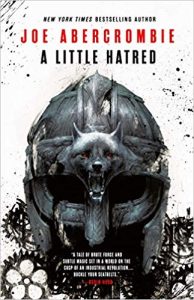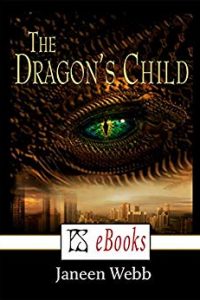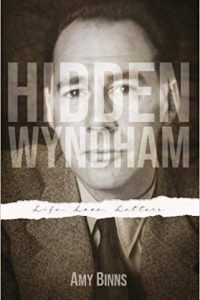Gary K. Wolfe Reviews A Little Hatred by Joe Abercombie
 A Little Hatred, Joe Abercombie (Orbit 978-0-316-18716-9, $27.00, 480pp, hc) September 2019.
A Little Hatred, Joe Abercombie (Orbit 978-0-316-18716-9, $27.00, 480pp, hc) September 2019.
Toward the end of Joe Abercombie’s A Little Hatred, the beginning of a new trilogy set in the world of his First Law novels and stories, one of the main characters, Rikke, comes across an imposing, temple-like building and asks “What is this?… A school for wizards?” The mage accompanying her explains, “Not quite…. It is a bank.” That exchange not only encapsulates the central historical tension of the novel – the rise of industry and commerce in a world whose social structures are still largely feudal – but also the distance between Abercrombie’s brand of minimalist fantasy and the promiscuous deployment of magic in the commercialized, Harry Pottery Barn tradition he alludes to. In fact Rikke, the daughter of the famous warrior Dogman from the earlier novels, is gifted with the Long Eye, a kind of second sight that she can’t willfully control, and it’s about the only magical power that functions in a meaningful way in Abercrombie’s rather tangled plot. As is usual with Abercrombie, what moves that plot along are not magical interventions and heroic quests but rather greed, pride, malevolence, cowardice, rebellion, political calculations and miscalculations, a series of bumbling or impulsive decisions, and – maybe a bit surprising in this muddy, smoky, violent world – a bit of star-crossed romance.
Set a few decades after the action of the earlier novels and featuring the offspring of some characters from those novels, A Little Hatred begins with the fragile, vaguely Europe-like Union under siege from without and within. The growth of industry has threatened small farmers, generated shifts in population, including immigration and urbanization, provided new opportunities for the concentration of wealth, and given rise to both a Luddite-like anti-machine movement and more broadly based labor unrest. At the same time, those pesky bellicose Northmen are invading, armed with names that sound like someone won a late-night drinking contest for grimdark monikers – Stour Nightfall, Black Calder, Scale Ironhand. As the novel opens, they’re looking for Rikke, with her special powers, but she turns out to be a tough and resourceful fugitive, assisted by a wise woman of the hills with formidable survival skills. Meanwhile, Leo dan Brock, the son of the governor of Angland – the region most endangered by the invasion – is hankering to go to war, but can’t seem to please his strategy-minded mom with his gung-ho tactics. Another heir with parental issues is the dissolute crown prince Orso, who’d like to do something useful, but doesn’t have the money to field an army – so he hits up his girlfriend Savine, a glamorous socialite who has made a fortune as an investor in the new industrial age, and a ruthless exploiter of the emerging working class. Orso intends to help fight the northern invasion, but when a violent labor uprising threatens the industrial city of Valbeck – an urban nightmare reminiscent of Dickens’s Coketown in Hard Times – he takes his forces there instead, and subsequently learns that Savine has somehow disappeared in the chaos.
Abercrombie can write macho battle scenes with as much clarity and fine detail as anyone, and a one-on-one battle of champions provides a major setpiece, but the most interesting sequences in A Little Hatred belong to his women characters – particularly Rikke’s suspenseful evasion of her pursuers in the opening chapters, and Savine’s hazardous efforts to survive amid chaotic urban violence later on. While both the crown prince Orso and the “Young Lion” Leo follow character arcs that seem well designed for setting up sequels, the significant roles of smart, competent women – generally less blinded by their own posturing than the men – add considerably to the promise of the Age of Madness series that this novel inaugurates. That series title, by the way, is apparently drawn from a Samuel Johnson epigraph that opens A Little Hatred: “The age is running mad after innovation; and all the business of the world is to be done in a new way.” If Abercrombie follows up on that, with the forces of real history invading the traditionally static worlds of high fantasy, he might have his most important series of novels yet.
Gary K. Wolfe is Emeritus Professor of Humanities at Roosevelt University and a reviewer for Locus magazine since 1991. His reviews have been collected in Soundings (BSFA Award 2006; Hugo nominee), Bearings (Hugo nominee 2011), and Sightings (2011), and his Evaporating Genres: Essays on Fantastic Literature (Wesleyan) received the Locus Award in 2012. Earlier books include The Known and the Unknown: The Iconography of Science Fiction (Eaton Award, 1981), Harlan Ellison: The Edge of Forever (with Ellen Weil, 2002), and David Lindsay (1982). For the Library of America, he edited American Science Fiction: Nine Classic Novels of the 1950s in 2012, with a similar set for the 1960s forthcoming. He has received the Pilgrim Award from the Science Fiction Research Association, the Distinguished Scholarship Award from the International Association for the Fantastic in the Arts, and a Special World Fantasy Award for criticism. His 24-lecture series How Great Science Fiction Works appeared from The Great Courses in 2016. He has received six Hugo nominations, two for his reviews collections and four for The Coode Street Podcast, which he has co-hosted with Jonathan Strahan for more than 300 episodes. He lives in Chicago.
This review and more like it in the December 2019 issue of Locus.
 While you are here, please take a moment to support Locus with a one-time or recurring donation. We rely on reader donations to keep the magazine and site going, and would like to keep the site paywall free, but WE NEED YOUR FINANCIAL SUPPORT to continue quality coverage of the science fiction and fantasy field.
While you are here, please take a moment to support Locus with a one-time or recurring donation. We rely on reader donations to keep the magazine and site going, and would like to keep the site paywall free, but WE NEED YOUR FINANCIAL SUPPORT to continue quality coverage of the science fiction and fantasy field.






